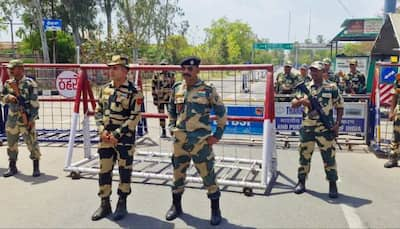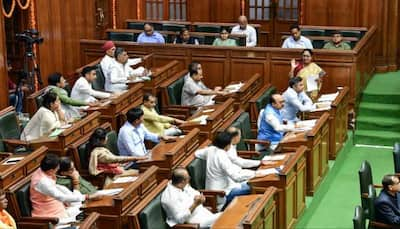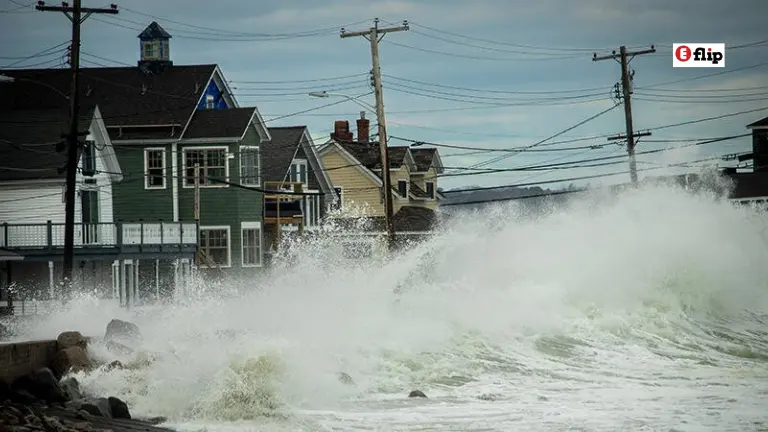Will Mumbai, Chennai, and Kolkata Survive the Rising Seas? A Human Look at Climate Change’s Coastal Threat
I’m sitting in my living room, scrolling through X, when a post catches my eye: a map showing Mumbai, Chennai, and Kolkata swallowed by dark blue patches—water creeping in where homes, markets, and lives once thrived. The sea-level rise threat isn’t some distant sci-fi plot; it’s here, knocking on the doors of India’s coastal giants. As someone who’s walked Mumbai’s bustling Marine Drive, savored Chennai’s filter coffee by the beach, and marveled at Kolkata’s chaotic charm, this hits hard. These aren’t just cities—they’re beating hearts of culture, commerce, and community. So, what happens when the seas rise and the sea-level rise threat becomes reality?
Let’s dive into this—literally and figuratively—because the stakes are personal, not just statistical. Mumbai, Chennai, and Kolkata aren’t just dots on a map; they’re home to millions of stories, and the sea-level rise threat could rewrite them all.

The Science Behind the Sea-Level Rise Threat
Climate change isn’t a new buzzword—it’s a slow burn that’s been heating up for decades. The Intergovernmental Panel on Climate Change (IPCC) has warned that global sea levels could rise by 0.28 to 1.01 meters by 2100, depending on greenhouse gas emissions. But here’s the kicker: it’s already happening faster than expected. Between 2006 and 2018, the World Meteorological Organization (WMO) clocked a rise of 3.7 mm per year, jumping to 4.5 mm annually from 2013 to 2022. For cities like Mumbai, Chennai, and Kolkata, perched on India’s vulnerable coastlines, this threat isn’t a century away—it’s a decade or two.
Why? Warming oceans expand, and melting ice caps—think Greenland and Antarctica—dump more water into the mix. Add in natural variability like El Niño, and the threat spikes even higher. A 2023 Nature Climate Change study flagged Chennai and Kolkata as Asian megacities at “significant risk” by 2100, with Mumbai not far behind. By 2050, Climate Central’s Coastal Risk Screening Tool predicts parts of these cities could face annual flooding—or worse, permanent submersion. For me, it’s not just data; it’s the thought of my cousin’s Mumbai flat underwater or my friend’s Kolkata bookshop lost to the tides.
Mumbai: The Financial Heart Facing the Sea-Level Rise Threat
Mumbai’s a city that never sleeps—24/7 hustle, Bollywood dreams, and monsoon chaos. But the sea-level rise threat could put it to rest. RMSI’s 2024 analysis pegs Mumbai as having the highest sea-level increase in India—4.44 cm from 1987 to 2021. By 2050, over 206 buildings and 9 km of roads could be inundated, per Business Today. That’s Colaba’s iconic Gateway of India, Bandra’s sea-facing bungalows, and the crowded western suburbs—all at risk.
I remember dodging puddles on Marine Drive during a rainy day, laughing with friends as waves splashed over the promenade. Now, I wonder: will those waves one day stay? The sea-level rise threat isn’t just about water—it’s about losing livelihoods. Mumbai’s 20 million residents, from fisherfolk to stockbrokers, depend on its coastal edge. A 2019 India Today study warned that by 2050, the Arabian Sea could flood most of the city annually, displacing tens of millions. My uncle, a taxi driver, already grumbles about worsening floods—how will he navigate a submerged Mumbai?
Chennai: A Coastal Gem Sinking Under the Sea-Level Rise Threat
Down south, Chennai’s got its own battle brewing. Known for its beaches and temples, this city of 11 million faces a grim forecast. RMSI estimates that by 2040, 7% of Chennai’s land could be submerged, rising to 10% by 2060. The sea-level rise threat here is personal—I’ve strolled along Marina Beach, feeling the sand between my toes, never imagining it could vanish. Yet, areas like Velachery, Ennore, and Minjur are flagged as high-risk zones by IndiaTimes for 2050 flooding.
Chennai’s already tasted climate chaos—think the 2015 floods that drowned streets and homes. The sea-level rise threat amplifies that nightmare. A friend who runs a small eatery near Besant Nagar beach once told me how rising tides erode his customer base every monsoon. If 45% of Chennai’s core sinks, as projected, what happens to him? To the millions who call this city home? The sea-level rise threat isn’t just a statistic—it’s a thief stealing futures.
Kolkata: The Delta City Teetering on the Edge
Then there’s Kolkata, the cultural soul of the east, cradled by the Hooghly River and the Sundarbans delta. Its low elevation—barely 1.5 meters above sea level—makes it a sitting duck for the sea-level rise threat. Hindustan Times reported in 2023 that Kolkata’s at “high risk” alongside Chennai, with flooding events potentially 20-30% worse due to climate variability. By 2050, IndiaSpend predicts most of Kolkata, including Baranagar and Howrah, could be underwater or ravaged by floods.
I’ve wandered through Kolkata’s narrow lanes, sipping tea at roadside stalls, enchanted by its old-world vibe. The Sundarbans, a UNESCO World Heritage site, are already shrinking—cyclones like Amphan and Yaas in 2020-21 forced relocations. My colleague’s family in South 24 Parganas fears their village won’t survive another decade. If Kolkata drowns, it’s not just buildings—it’s a way of life, from Durga Puja pandals to the Howrah Bridge’s hum.
The Human Toll: Beyond the Numbers
The sea-level rise threat isn’t cold data—it’s warm, messy, human. In Mumbai, it’s the street vendor who’ll lose his cart to floods. In Chennai, it’s the fisherman whose boat can’t navigate a submerged shore. In Kolkata, it’s the teacher whose school sinks. News18 warned in 2021 that Mumbai, Navi Mumbai, and Kolkata could be below tide levels by 2030—less than five years from now. That’s 31 million coastal Indians at risk by 2050, per IndiaSpend, ballooning to 51 million by 2100 if emissions don’t drop.
I think of my niece in Mumbai, dreaming of a tech career, or my Chennai buddy planning his wedding by the sea. The sea-level rise threat could wash those dreams away. On X, users vent: “Mumbai’s gone if we don’t act,” or “Kolkata’s my home—where do I go?” It’s raw, real, and urgent.
Can We Fight the Sea-Level Rise Threat?
So, what’s the fix? It’s not hopeless, but it’s hard. Cutting emissions is step one—India’s pledged net-zero by 2070, but 2050’s the crunch time for these cities. Mumbai’s building sea walls, Chennai’s restoring wetlands, and Kolkata’s eyeing embankments. But Science News notes global losses could hit $1 trillion by 2050 without prep—India can’t foot that alone. Adaptation’s key: resilient drainage (Mumbai’s 1900s system can’t cope), elevated infrastructure, and community plans.
I’ve seen hope, too—locals in Chennai planting mangroves, Mumbai activists pushing for sustainable urban design. The sea-level rise threat demands we act, not just lament. Governments, citizens, us—we’re all in this.
A Personal Plea: Let’s Save Our Cities
Writing this, I feel the weight. These cities aren’t abstract—they’re where I’ve laughed, cried, lived. The sea-level rise threat isn’t a “maybe”—it’s a “when” unless we shift gears. I don’t want my kids visiting a submerged Mumbai via submarine, or Chennai and Kolkata as memories in a museum. Do you?
What’s your stake in this? Have you felt the sea-level rise threat in your city—Mumbai, Chennai, Kolkata, or beyond? Share your story in the comments—I want to hear how it’s hitting home. And if this moved you, subscribe for more climate truths. Let’s rally to save our cities—together, we might just turn the tide!








